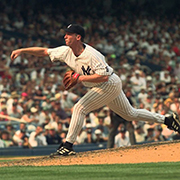|
insta posted:As someone who does the help tickets for Voron, please god build it stock first except at most canbus and umbilical.
|
|
|
|

|
| # ? May 29, 2024 16:32 |
|
Petg took me like 3 tries to figure out and man no problems. 80° bed with textured pei and all set stuck like a charm. Released like a charm once it cooled.
|
|
|
|
Having a sock is also a huge help with PETG
|
|
|
|
NewFatMike posted:I think PETG is probably just one of those things you have trouble with or you donít. For me, no amount of tinkering gets PETG right, but I effortlessly print with polycarbonate with excellent results. Straight PC? What's your chamber temp?
|
|
|
|
Nah itís Prusament PC Blend. Havenít gone through all the rolls I bought before they reformulated.
|
|
|
|
Sockser posted:Having a sock is also a huge help with PETG I've got at least, like, 30 socks but I don't think they help with 3D printing very much??
|
|
|
|
NewFatMike posted:Nah itís Prusament PC Blend. Havenít gone through all the rolls I bought before they reformulated. Is it bad now
|
|
|
|
slurm posted:Is it bad now it would be hilarious if true.
|
|
|
|
slurm posted:Is it bad now Iíve heard itís better but also just indicating that I donít have experience with what theyíre selling now
|
|
|
|
Nerobro posted:PETG has a lot.. of.. things.. going on. First, there's its propencity for absorbing moisture, and that causes under extrustion, or surface artifacts, spitting.. all kinds of things. Then it's ~sticky~, it wants to stick to itself more than anything else. It sticks ~so well~ to glass it can spall the glass. It sticks FAR to well to polycarbonate build surfaces. It chars and drops dark blobs into prints. Oh, and it strings. This was true maybe 4 years ago. Extruders (and slicers for that matter) as improved enough that most of this is no longer true. The only thing is bed adhesion. Gluestick will not only solve issues where prints wont stick, it'll also work as handy barrier for stuff like PETG and makes sure you can relatively easily remove prints.
|
|
|
|
ImplicitAssembler posted:This was true maybe 4 years ago. Extruders (and slicers for that matter) as improved enough that most of this is no longer true. Likewise if you clean a pei bed with isopropyl and print petg on it, you'll bond so hard to the bed you'll ruin it
|
|
|
|
Sockser posted:Note: this means recyclable as in "you can melt it down and reuse it" not "you can put it in your blue bins and your local recycling center will figure it out" so model a #1 ♻ symbol into your part 
|
|
|
|
Sagebrush posted:I think Nerobro is exaggerating the difficulty of PETG. Nobody has a polycarbonate build plate, the adhesion is easily addressable, and it doesn't burn and drop stuff on your part unless your machine is hosed up, lol. I am not. It can be printed, but there's a lot more to making it print well than either ABS, or PLA. Almost nothing I said is imposble to overcome, and most of it, isn't even "hard" to overcome, but the fact it NEEDS it, is and the people who know how to make it work don't talk about it. Lots of people have polycarbonate build plates, probally 1/3 of the people with enders? Buildtak stickers are polycarbonate. Yes, adhesion is addressable, but it ~needs addressing~. As for the burnt snotblobs, four printers in, they all have done it. If that ~never~ happens for you? What are you doing so different? Mine seem to stem from the sticky filament building up on the sides of the nozzle eventually.. and at some point it peels off. PETG also responds well to being printed slowly. And.. in general.. slow is bad. But that's a IMHO thing. Finally, PETG is "sticky" even when printed. That makes it a poor choice for sliding mechanical fits. If I had to use a term that was normal, I'd call it galling, where it will kinda weld itself on screw threads or sliding fits. So.. if it's a "moving mechanical peice" I'm not using PETG. tater_salad posted:Petg took me like 3 tries to figure out and man no problems. 80° bed with textured pei and all set stuck like a charm. Released like a charm once it cooled. So we're clear. This right here, is the problem. The "It works for me" versus "this is why it works" leaving anyone who's having trouble just in a lurch. ImplicitAssembler posted:This was true maybe 4 years ago. Extruders (and slicers for that matter) as improved enough that most of this is no longer true. V6, MK8, and whatever the MPMD uses. I've kept up on the leading edge of slicers. And I'm using good build surfaces. It's still true from what I've seen. Extruders have never been the problem from what I've seen. Nerobro fucked around with this message at 20:55 on Feb 4, 2023 |
|
|
|
Ok, so it's hard for you, we get it. I get the odd blob, that's easily removed. I don't get stringing, bed adhesion isn't a real issue. Stringing is easily avoided with DD extruders and proper retraction settings in your slicer. It prints as easily as PLA and is much better for functional parts, as it has just enough flex. Is it as good as ABS? No, but it's much much easier to print.
|
|
|
|
I get burnt snotblobs slowly gathering on my extruders when printing PETG, it's just a fact of life. They gotta be wiped off, it kind of sucks. A sock helps keep them localized to the nozzle itself. I think it's from the hot nozzle gradually picking up little spiderweb wisps here and there, and they snowball over time. The prints themselves always look great.
|
|
|
|
insta posted:As someone who does the help tickets for Voron, please god build it stock first except at most canbus and umbilical. Am I allowed to start with stealthburner? Or just use whatever's in the trident repo?
|
|
|
|
Nerobro posted:So we're clear. This right here, is the problem. The "It works for me" versus "this is why it works" leaving anyone who's having trouble just in a lurch. Here's what works for me on my pei textured plate for overture petg 1. Bed temp of 80. I slowly bumped it till it stuck 2. Glue stick on bed Left over from my first cooler attempt (I did print on a no glue stick area without an issue too). 3. Brim 4. Possibly lower your z a tiny bit. I also print in my basement that's pretty chilly so having the flex plate cool to like 50f probably helps release.
|
|
|
|
The Eyes Have It posted:I get burnt snotblobs slowly gathering on my extruders when printing PETG, it's just a fact of life. They gotta be wiped off, it kind of sucks. A sock helps keep them localized to the nozzle itself. I've found that this, like 99% of petg problems, tends to be moisture. It needs to be kept dryer than you think it does. I had all the typical problems with PETG until I started feeding it out of a tote with a good couple pounds of silica gel in it, now it's my default filament pretty much.
|
|
|
|
Hmm, how dry are we talking here? I keep my filament individually bagged in plastic totes loaded with desiccant and a monitor, keeping it <25% rh. Maybe I'll try a day in the filament dryer next time just to see if it's any cleaner. It's exclusively Prusa printers with prusament filament & settings for PETG, I'm not exactly going off the reservation.
|
|
|
|
NomNomNom posted:Am I allowed to start with stealthburner? Or just use whatever's in the trident repo? You should be allowed to do whatever sparks joy with consenting adults without harming others. Just know that a Voron is not 4-bolts-and-print-calicat-dot-geecode. A "kit" is like 60 bags of fasteners and a pile of metal tubes. There are wonderful manuals and docs, but they are focused on a stock build. A Stealthburner has a pretty obvious part where it goes, and hopefully you can make the mental leaps from when the manual says "install the Afterburner toolhead", you can recognize that is when you instead put on the Stealthburner toolhead. The pictures in the manual will not match your components. You will need to understand how the Stealthburner works when you hit instructions like "load the filament" andsuch. I spent the better part of 3 days walking a guy through building his kit. He bought every upgrade at once and wanted to install all the mods at once. He had also just bought a new Macbook, coming from a Windows world, so we also had to do a bunch of generic technical support. He had never before edited a config file. He was Morbo-ishly confused and infuriated with technical jargon like "config file". It was hell on wheels. This was a lot more problematic because a whole bunch of the startup process (that is extensively documented) walks you through getting your machine printing and homing with an inductive probe. Inductive probes are fine. Use an inductive for awhile, until you personally know why they don't work for you, then switch to something else.
|
|
|
|
Anyone who has stringing / blobbing problems with PETG needs to admit to themselves that their drying solution sucks. I dry my PETG in those lovely eSun drying boxes set to 80C, and I just reset the timer every day so they're constantly hot. I cycle the dessicant out, too. When I do this, I get beautiful PETG prints that work just like any other material. If I deviate from this by even 5% I get the hell on wheels you all are complaining about.
|
|
|
|
insta posted:You should be allowed to do whatever sparks joy with consenting adults without harming others. That does sound like hell. I'm an engineer, so not afraid to tinker (built a marlin driven cnc). Still don't like to take the pig headed route if I don't have to. Does the klicky mod fall in that category too?
|
|
|
|
My PETG seems to be working much better now. Looks like the first attempts wound up clogging up my nozzle. If I tested extrusion it worked, but during an actual print little to nothing came out. After swapping that and turning the temp down to 215, it seems to be working fine. No stringing, but Iím getting a slight bit of under extrusion after traveling (not consistently, just a few mm on a couple of layers), so it might still need tweaking. And I do see the blob building up on the nozzle, Iíll have to take care of that after this print.
|
|
|
|
TVs Ian posted:My PETG seems to be working much better now. Looks like the first attempts wound up clogging up my nozzle. If I tested extrusion it worked, but during an actual print little to nothing came out. After swapping that and turning the temp down to 215, it seems to be working fine. No stringing, but Iím getting a slight bit of under extrusion after traveling (not consistently, just a few mm on a couple of layers), so it might still need tweaking. That's low for petg. I've found it works best in the 230-245 range depending on the formulation. Might be the cause of the underextrusion? The Eyes Have It posted:Hmm, how dry are we talking here? I keep my filament individually bagged in plastic totes loaded with desiccant and a monitor, keeping it <25% rh. Are you feeding it from the tote, or is that just for storage? A spool out in open air will pick up water surprisingly quickly. I don't have a hygrometer in my drybox, so I don't know if that's dry enough, but i do have to dry it properly in the oven every so often. The dessicant is more for maintaining low humidity, it won't get there on its own. e: i also have to mention that switching to direct drive helped my nozzle booger situation a heck of a lot, but that was amidst a fairly complete overhaul of the printer so I can't say for sure if that was what solved it.
|
|
|
|
NomNomNom posted:That does sound like hell. Definitely add Klicky after your machine works normally. You need to learn all the Z and probing mechanics, as well as get comfortable (really comfortable) editing macros.
|
|
|
|
Dr. Fishopolis posted:That's low for petg. I've found it works best in the 230-245 range depending on the formulation. Might be the cause of the underextrusion? Itís Inland PETG+, which depending on what comments you believe, is either from one of their better sources since they just respool from other suppliers, or is a different formula thatís supposed to be easier to print.
|
|
|
|
Dr. Fishopolis posted:Are you feeding it from the tote, or is that just for storage? A spool out in open air will pick up water surprisingly quickly. I don't have a hygrometer in my drybox, so I don't know if that's dry enough, but i do have to dry it properly in the oven every so often. The dessicant is more for maintaining low humidity, it won't get there on its own. Filament feeds from a separate drybox attached to the printer enclosure. Next time I print PETG I'll give it a good drying in the filament dryer first and see if I notice any diff. I don't use it THAT often, but I'll definitely try next time. The prints always look good but if I can get rid of the PETG snot that slowly gathers on the nozzle and blackens to a sticky goop, I'd be all the way happy instead of just mostly happy.
|
|
|
|
I cannot for the life of me get my copperfill to print with anything but a brass nozzle, which is unfortunate because the abrasive filaments will eventually destroy them. Iíve tried hardened steel and vanadium nozzles and it just keeps getting clogged, tried turning off retractions, no luck. Are the thermal properties of steel and vanadium just way worse? Do I need to turn up the temp to compensate? Iím half tempted to just buy a bunch of brass nozzles in bulk and just accept that theyíre going to have to be replaced periodically.
|
|
|
|
Talorat posted:Are the thermal properties of steel and vanadium just way worse? Do I need to turn up the temp to compensate? Yeah, up your temp by 10 degrees C for hardened steel, IIRC. And thanks for reminding me because I literally just swapped back to a hardened steel nozzle a couple of nights ago and forgot to make this adjustment, and I had issues.
|
|
|
|
You need to up temps 10C or more for steel, and go slower for filled stuff. edit: dang it
|
|
|
|
When you say go slower, what specific setting should I be changing in Prusa slicer for that? Also should I be avoiding .1mm Layer height? I think I remember reading that somewhere.
|
|
|
|
Tungsten carbide nozzle would probably be your friend here
|
|
|
|
More heat and a silicone sock. I'm guessing that the copper fill probably exacerbates the issue because the copper will suck some of the heat away as it passes through. But since copper and brass are similar, thermally, that doesn't happen with your (short lived) brass nozzles.
|
|
|
|
insta posted:Anyone who has stringing / blobbing problems with PETG needs to admit to themselves that their drying solution sucks. I dry my PETG in those lovely eSun drying boxes set to 80C, and I just reset the timer every day so they're constantly hot. I cycle the dessicant out, too. And ~this~ might just be the solution.
|
|
|
|
Here4DaGangBang posted:Yeah, up your temp by 10 degrees C for hardened steel, IIRC. And thanks for reminding me because I literally just swapped back to a hardened steel nozzle a couple of nights ago and forgot to make this adjustment, and I had issues. This explains the weird layer issues I was getting on a big print last night, I put in a new 0.6 hardened steel nozzle and was wondering why I was getting underextrusion and layer cracks until I turned the temperature up past the usual for this filament
|
|
|
|
Dr. Fishopolis posted:I've found that this, like 99% of petg problems, tends to be moisture. It needs to be kept dryer than you think it does. I had all the typical problems with PETG until I started feeding it out of a tote with a good couple pounds of silica gel in it, now it's my default filament pretty much. All plastics benefit from being dried. Moisture control is an important part of proper plastics manufacturing; the sacks of pellets used for injection molding are usually baked in a kiln just before loading into the machine. The extent to which moisture is a problem in 3D printing is variable. It usually takes months for PLA to absorb enough water to cause noticeable problems, and then it just becomes brittle and makes somewhat ugly prints. Nylon will absorb enough water overnight to become unusable. PETG is somewhere in the middle. I do recommend that anyone who's serious about print quality, or who wants to use exotic filaments, buy or build a filament dryer. A 40 dollar food dehydrator from Amazon with a couple of modifications to the racks will do nicely. AlexDeGruven posted:More heat and a silicone sock. I'm guessing that the copper fill probably exacerbates the issue because the copper will suck some of the heat away as it passes through. But since copper and brass are similar, thermally, that doesn't happen with your (short lived) brass nozzles. Metal-filled filament has a higher heat capacity than pure plastic, so it carries more heat away with it as it's deposited into the print. This happens in exactly the same manner for both brass and steel nozzles, but the steel nozzle conducts heat more slowly, which means it takes longer for heat from the cartridge to spread through the nozzle. If you combine that effect with the metal filament sucking it away, you get a major temperature drop at the point of extrusion. The brass nozzles are still losing heat but they're conducting it back in from the heater much faster. Talorat posted:When you say go slower, what specific setting should I be changing in Prusa slicer for that? Also should I be avoiding .1mm Layer height? I think I remember reading that somewhere. The easiest thing to change is filament settings > advanced > max volumetric speed. That will override all movement speeds so that the extrusion rate never exceeds the number you have set. This is appropriate for thermally-limited situations like yours, because the limit is a function of how fast you can push the material through the nozzle while keeping the temperature up. Start with something super low like 2mm^3/s and work up from there. Incidentally, another factor when printing metal-filled filament that hasn't been discussed yet is that the print itself tends to hold heat and stay soft a lot longer. Cranking up the cooling to compensate isn't always great, because you'll get poor layer adhesion. Printing slowly and giving each layer time to cool off before you put more stuff on top is a good idea. Reducing the volumetric speed here will also help with that. I have printed metal-filled filaments at 0.1mm and they worked fine. It may be more of a concern for composite filaments with larger particles in them, like woodfill or glass/carbon stuff, but the metal component in these metal-filled filaments is essentially dust. Sagebrush fucked around with this message at 17:49 on Feb 5, 2023 |
|
|
|
I suppose for fine milled metal powder (and really cheap CF), low layers are ok. For functional filled materials, go 0.25 layers or so, and like Sage said, slow and hot. The properties are in the fibers, maximize their cross-section through the extrusion.
|
|
|
|
Got it! Thanks for the advice everyone, Iíll unclog the nozzle and give it another go!
|
|
|
|
So I printed some 3rd party Necromunda Escher jetbikes and riders listed at 32mm scale, hoping they wouldnt look out of place beside the regulars. They do anyway because the creator gave them some ridiculous proportions, but also the general scale seems off... this tracks with what I previously understood, these are 32mm vs Necromunda 28mm and that I should try reduce them around 10% in size. I'll also probably just slice the riders legs (maybe with some editing..) and arms and use real Escher torsos since I have spares. I know I need to resupport them, I'm as also wondering if some of the finer details on the bikes will even come out well when scaled down 10%. Is it as simple as just selecting and changing scales in chitubox and then supporting them or should I be watching out for other things?
|
|
|
|

|
| # ? May 29, 2024 16:32 |
|
I haven't printed with ABS before, but I was poking around the idea of building a voron of some kind, and they recommend it. I also know it's toxic and finnicky and sucks to print. I've used PLA, PETG, and TPU. I know PETG is a decent alternative to ABS, but what are some others? I feel like every time I read this thread people mention something I've never heard of. What's the new hotness, in the temperature resistance sense? What about durability? Relative ease of printing? Toxicity? Is there some article I should read somewhere?
|
|
|


































